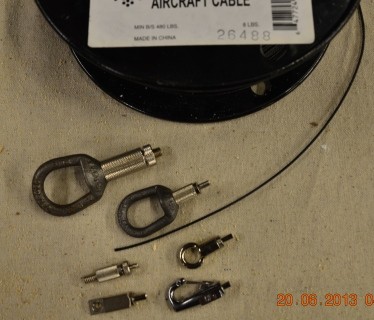I’ve been hearing a lot lately from individuals who are working hard at scenic creativity that are disappointed there is very little information toward tips on rigging and rigging hardware. Almost every scenic project requires the suspension of some sort of scenic element that echoes back scary and dangerous. Which leads me to the question that all of us ask sometime in our scenic life, why does suspension of scenery have to be so hard? It’s consistently clear that gravity always seems to demonstrate why it is the most powerful force in the universe. And if that were not enough to deal with, our funny little brain is designed to repeat whatever we’ve already done and prefer it that way, even if you’re doing things the hard way. Scenic life can be soooo stressful!
Consistently invest in yourself, constantly improving your skills, techniques and knowledge of hardware accessories will make life so much easier. In addition, it can lower cost and save you time. In the past several years there have been significant improvements toward hardware. Here are a few of my favorites.
One approach that helps with the rigging challenge is with the use of gripper gliders and aircraft cable. Using the combination creates the illusion that a heavy scenic piece is freely floating, unanchored by gravity. Cable gliders and aircraft cable are designed to improve our rigging endeavors toward suspending and adjusting heights much easier.
We frequently use aircraft cable to suspend scenery from the fly system battens. The stranded steel core adds strength and flexibility to the cable. Aircraft cable is classified by the number of strands in the cable multiplied by the number of wires in each strand. For example, the notation 7×7 indicates that the cable has seven strands made up of seven wires in each strand. We use 1/16” 7×7 black coated galvanized aircraft cable for most of our scenic needs and 1/8” 7×19 black coated galvanized aircraft cable for much heavier projects. Be sure to check with the manufacturer specs on the breaking strength and factor the 5:1 ratio. As an example, if 1/16” cable is rated 480 LBS breaking strength, divide 5 into 480, 96 LBS is the dynamic weight limit for that cable. If your scenic piece weighs 120 LBS, you would need two 1/16” aircraft cables to support the weight. I will go into detail of creating cable ends using swages, thimbles and crimping tools in the next article. Here is a link to a great company I purchase our aircraft cable and rigging supplies from. Http://www.stageriggingonline.com/cable-black-gac.html
One of my most used hardware in rigging is cable gliders. A glider is a gripping mechanism for aircraft cable that locks onto the cable by ball bearings and can be easily move anywhere on the cable by pressing the quick release plunger. You can adjust a fraction of an inch or by any length. This makes hanging scenery quick, accurate and saves a lot of frustration toward repositioning something zillions of times. Just as aircraft cable, gliders are rated by the breaking strength of the glider with the 5:1 ratio to be applied. As an example, if the glider is rated at 300 LBS breaking strength then the dynamic weight limit is 60 LBS. Here is a link to a variety of gliders from. Griplocksystems.com
Hopefully you will see this article as beginning steps toward doing the right amount of research before doing something yourself. Skimping on hardware or not doing something proper is dumb and could kill someone. As a church we want to lead people to heaven, inadvertently, we don’t want to hand them an express ticket. Remember, safety is the most important thing.

